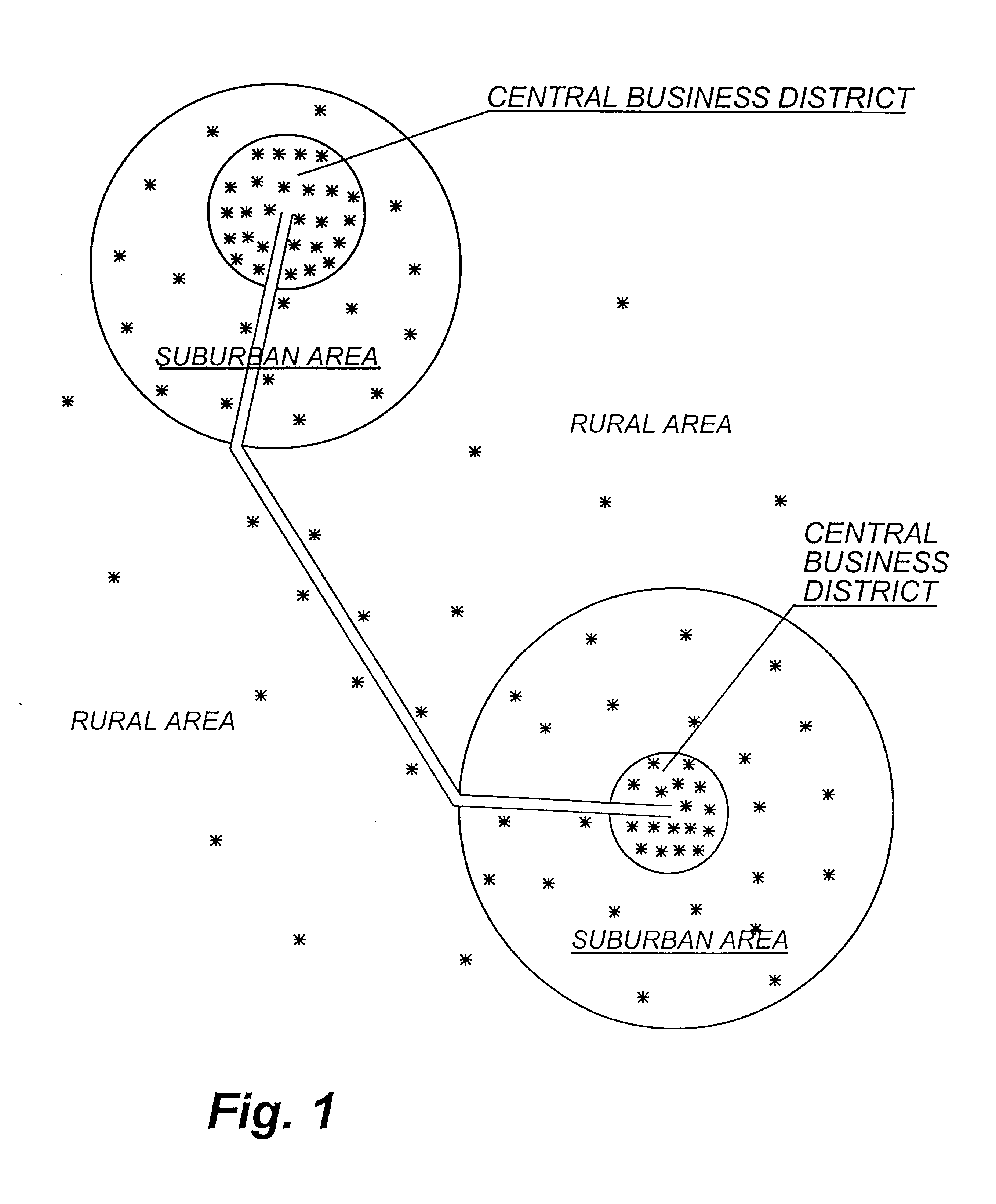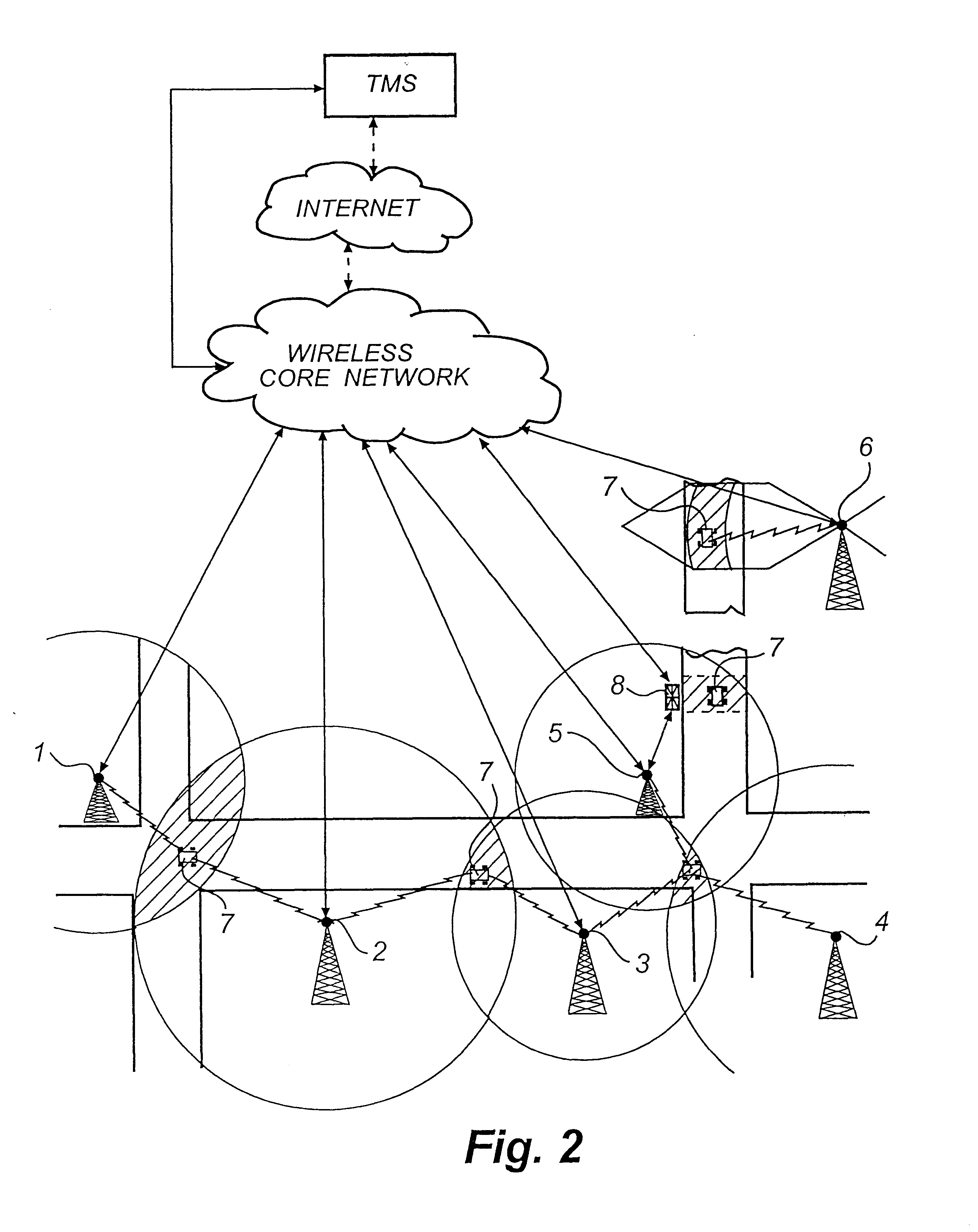Traffic monitoring system and method
a traffic monitoring and traffic technology, applied in the field of traffic monitoring systems, can solve the problems of almost all major arteries, substantial congestion, and the national highway system developed in the early part of the century have not fared any better, so as to increase the density of base stations, improve data collection ability, and increase the potential frequency reuse
- Summary
- Abstract
- Description
- Claims
- Application Information
AI Technical Summary
Benefits of technology
Problems solved by technology
Method used
Image
Examples
Embodiment Construction
The proposed traffic monitoring system could conceivably cover all areas where a mobile telecommunications network is deployed. To the extent that vehicular traffic is more likely to be heavy in critical thoroughfares, these areas are of particular interest, and will receive more data as more vehicles will be present, and more likely to engage in conversations (or simply carry wireless phones). In general, the usage of mobile devices in an area reflects the number of base stations located that area, which is illustrated in FIG. 1.
Referring to FIG. 2, it is conceivable that different techniques could be used for positioning a mobile device at different locations as these locations may even belong to different operators or be of different types such as CDMA, GSM, etc. In addition, the telecommunications networks could use different technologies and therefore require different algorithms. This is illustrated in FIG. 2, wherein base stations 1 and 2 use Doppler Shift data to compute spe...
PUM
 Login to View More
Login to View More Abstract
Description
Claims
Application Information
 Login to View More
Login to View More - R&D
- Intellectual Property
- Life Sciences
- Materials
- Tech Scout
- Unparalleled Data Quality
- Higher Quality Content
- 60% Fewer Hallucinations
Browse by: Latest US Patents, China's latest patents, Technical Efficacy Thesaurus, Application Domain, Technology Topic, Popular Technical Reports.
© 2025 PatSnap. All rights reserved.Legal|Privacy policy|Modern Slavery Act Transparency Statement|Sitemap|About US| Contact US: help@patsnap.com



